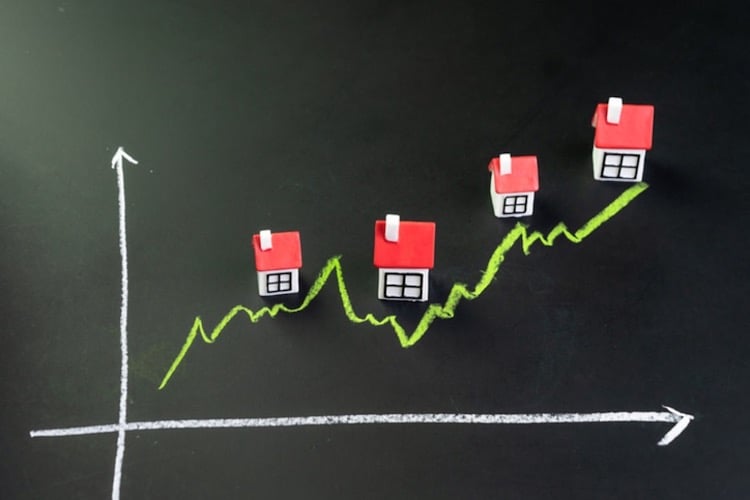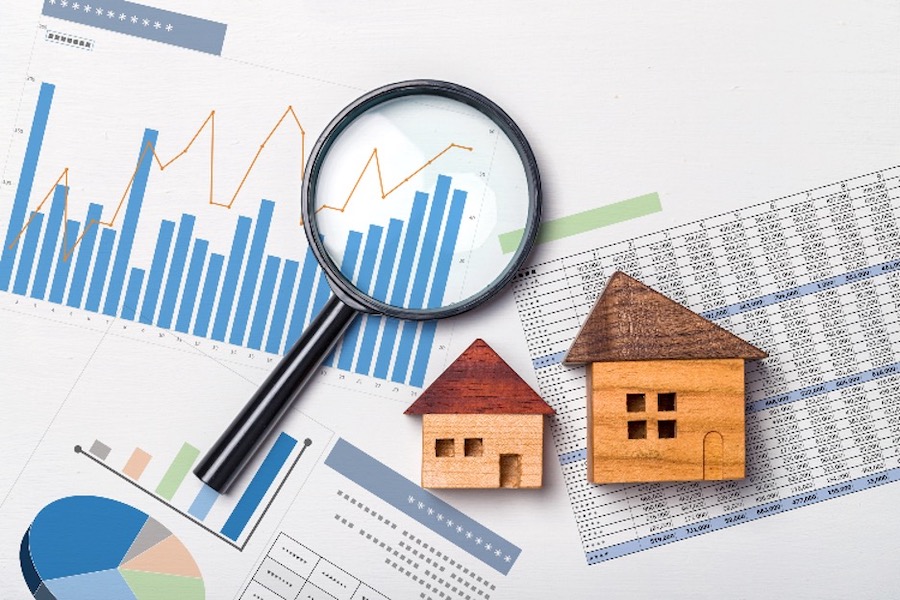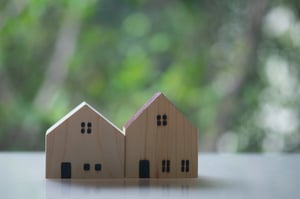Fred E. Foldvary was a lecturer in economics at San Jose State University and a research fellow at The Independent Institute. In 1997, Professor Foldvary observed that “The next major bust, 18 years after the 1990 downturn, will be around 2008, if there is no major interruption such as a global war.”
Sure enough, the Great Recession of 2008 devastated the U.S. economy and real estate markets, along with the economies of other countries around the world.
Although the last recession caught many people off guard, by observing real estate cycles it’s possible to notice housing trends, and estimate when and if the next real estate bubble might occur.
Key Takeaways
- Real estate markets have historically moved through 18-year cycles.
- The four phases of the real estate cycle are recovery, expansion, hypersupply, and recession.
- Factors affecting the real estate market cycle include interest rates, demographic trends, and government intervention.
- By understanding market trends, investors can identify potential opportunities through all four phases of the real estate cycle.
What is a Real Estate Cycle?
As far back as 1876, researchers have been observing the predictable 18-year cycle that real estate markets move through. Up until 1925, the real estate cycle ran like clockwork through four main stages, according to a recent article on the legal intelligence website JD Supra:
- Recovery with declining vacancy and no new construction.
- Expansion with declining vacancy and new construction.
- Hypersupply with increasing vacancy and new construction.
- Recession where vacancy continues to increase as more completions are brought to market.
However, beginning in 1925, the normal 18-year real estate cycle was interrupted by government regulation.
The Great Depression from 1929 – 1939, World War II, and more recently the Federal Reserve’s yield curve control and quantitative easing programs are all periods when skyrocketing government regulation and intervention has impacted the normal cycle of the real estate market.

Why The Real Estate Market Has Cycles
Just as with the economy at large, there are countless variables affecting real estate market cycles, some of which are only obvious in hindsight. However, many experts agree that there are several main factors that influence cycles in the real estate market:
Overall Economy
The condition of both the global and U.S. economy have a significant impact on real estate market cycles.
When the economy is doing well, people have more money and are driven to invest in real estate or move up to a nicer home. Because real estate can generate recurring income and profit from potential appreciation, more individuals choose to put their wealth to work by investing in real estate.
As Roofstock recently reported, the demand for single-family rentals has reached unprecedented levels. The leading online marketplace for investing in the single-family rental (SFR) sector has seen Gross Merchandise Value (GMV) on its platform increase by 569% year-over-year (Q1 2021 vs. Q1 2020).
Interest Rates
High interest rates often act as a deterrent to buying a home and investing in real estate. That’s because the more expensive a monthly mortgage payment is, the fewer people there are that may be able to afford to own a home.
Although reducing interest rates generally makes homeownership more affordable, low interest rates can also cause property prices to rise.
The Bank for International Settlements (BIS) has analyzed the effect of interest rates and house prices in the United States and around the world. According to the working paper, interest rates in the U.S. play a surprisingly important role as drivers of house prices, both within and outside of the country.
Low interest rates combined with higher housing prices may also be why rents for single-family homes are soaring. As Nasdaq.com reports, SFR rents rose 5.3% in April 2021 compared to the previous April 2020, marking the largest year-over-year gain in home rent prices in nearly 15 years.
Demographics and Income
Shifts in the population makeup and real income levels also influence the real estate cycle, according to HUD.
During the 20 year period between 1940 – 1960, the homeownership rate in the U.S. rose by over 18% (from 43.6% to 61.9%) due to a larger percentage of households being in the prime home buying age groups, higher incomes, and the development of large-scale housing subdivisions with affordable houses.
Since the 1960s, the homeownership rate has remained in the mid-60% range across many segments of the population, due in large part to the absence of growth in real family incomes.
Fast forward to today, and single-family rental homes are quickly becoming the starter homes of previous generations.
As the Single-Family Rental Investment Trends Report from Arbor Realty Trust reveals, over 40% of Gen Zers (people born in the 1990s to early 2021s) want to rent a single-family home after graduating from university.
Government Intervention
Government policies and tax regulations affect real estate cycles and the demand for real estate investment.
Low interest rates designed to spur investment are contributing to the rapid rise in housing prices and the subsequent demand for single-family rental homes. A growing number of institutional investors and home builders are targeting the SFR asset class, with 12% of new single-family construction in 2021 being purchased for rentals.
For example, the top American homebuilder Lennar Homes recently partnered with Roofstock to offer single-family homes for rent in high-growth markets such as Dallas-Fort Worth, San Antonio, and Atlanta.
The tax code in the U.S. is also extremely friendly to real estate investors. Some of the tax benefits of owning rental property include:
- Deduction of operating expenses such as repairs and property taxes.
- Write off of travel and business expenses related to the property.
- Property depreciation expense used to reduce the amount of taxable net income.
- 1031 tax deferred exchanges used to defer paying capital gains tax.

Four Phases of The Real Estate Cycle
A recent article from the Harvard Extension School, How to Use Real Estate Trends to Predict the Next Housing Bubble, describes the four phases of the real estate cycle:
Phase #1: Recovery
During the recovery phase, the economy has characteristics of a recession. Unemployment rates are high, consumption is low, with real estate prices becoming more affordable. As the real estate market adjusts, declining rent growth helps to reduce vacancy rates. Eventually, new construction begins to meet the future anticipated demand for real estate.
Phase #2: Expansion
As available property becomes harder to find, the basic law of supply and demand kicks in. Because it can take several years for developers to bring new inventory to the market, occupancy rates and rents continue to rise. During the expansion phase, investors value property based on anticipated rent growth instead of current conditions in the recovering marketplace.
Phase #3: Hypersupply
While occupancy rates exceed the long-term average, rent prices continue to grow. The increase in rental rates spur new construction and developers and investors start building for a future market. At the hypersupply phase, investors should watch the market for an increase in unsold inventory or rising vacancy rates that could signal a peak in prices and a potential upcoming recession.
Phase #4: Recession
Because of the time lag between the demand for property and new construction coming to market, more completions often arrive just as a recession phase begins. Vacancy levels begin to rise due to too much inventory and a slowdown in economic growth.
At this phase in the real estate cycle, there may be an increase in short sales, pre foreclosure homes, and REO property taken back by the banks. Opportunistic real estate buyers keeping capital on the sidelines often have the chance to purchase good rental property at a discount, to buy-and-hold until the next phase in the real estate cycle begins.
How to Think About Investing in Each Real Estate Cycle
A recent post on the BiggerPockets Blog suggests what to buy for stellar returns in all four stages of the real estate cycle:
| Phase | Real Estate Investing Strategies |
| Recovery | Flipping, wholesaling, buy-and-hold, private lending, hard money lending |
| Expansion | Buy-and-hold |
| Hypersupply | Buy-and-hold |
| Recession | Private lending, hard money lending |
For most real estate investors, the million-dollar question is which phase of the real estate cycle we are currently in.
A look at the recent performance of the single-family rental class suggests there may be plenty of growth yet to come. Fannie Mae forecasts that housing starts will increase this year (as a result of the pandemic slowdown in 2020), then decline in 2022. Meanwhile, the median sales prices of both new and existing homes are predicted to rise year-over-year.
However, Fannie also expects the low supply of housing inventory to contribute to higher inflation, which may cool down the rapidly rising rents for single-family homes if tenants have less income to pay more rent.
Of course, every real estate investor has a unique view on which phase of the real estate market cycle we are in.
Final Thoughts
Understanding the four phases of the real estate market cycle – recovery, expansion, hypersupply, and recession – is crucial for long-term investing success. Real estate markets can and do change, and investors must keep a close eye on the market to identify upcoming trends. The good news is that there are potential opportunities for successfully investing in real estate through all phases of the real estate market cycle.









